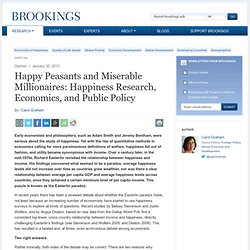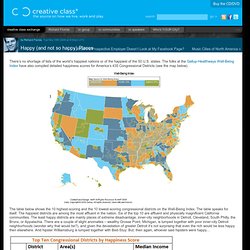

Happy Peasants and Miserable Millionaires: Happiness Research, Economics, and Public Policy. Early economists and philosophers, such as Adam Smith and Jeremy Bentham, were serious about the study of happiness.

Yet with the rise of quantitative methods in economics calling for more parsimonious definitions of welfare, happiness fell out of fashion, and utility became synonymous with income. Over a century later, in the mid-1970s, Richard Easterlin revisited the relationship between happiness and income. His findings uncovered what seemed to be a paradox; average happiness levels did not increase over time as countries grew wealthier, nor was there a clear relationship between average per capita GDP and average happiness levels across countries, once they achieved a certain minimum level of per capita income. This puzzle is known as the Easterlin paradox. In recent years there has been a renewed debate about whether the Easterlin paradox holds, not least because an increasing number of economists have started to use happiness surveys to explore all kinds of questions. Happy (and not so happy) Places. There’s no shortage of lists of the world’s happiest nations or of the happiest of the 50 U.S. states.

The folks at the Gallup-Healthways Well-Being Index have also compiled detailed happiness scores for America’s 435 Congressional Districts (see the map below). The table below shows the 10 highest-scoring and the 10 lowest-scoring congressional districts on the Well-Being Index. The table speaks for itself.